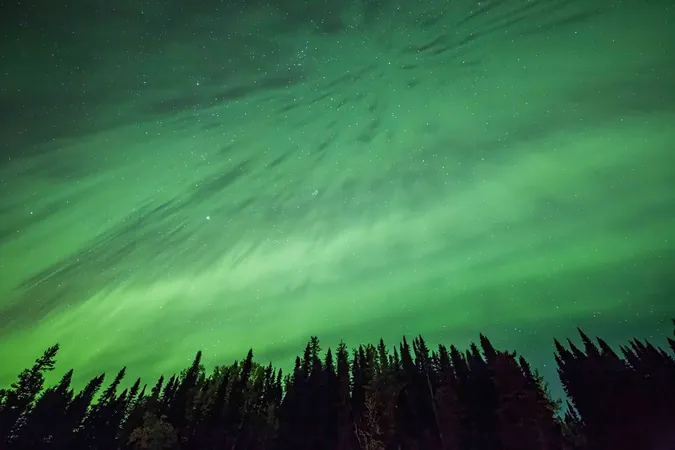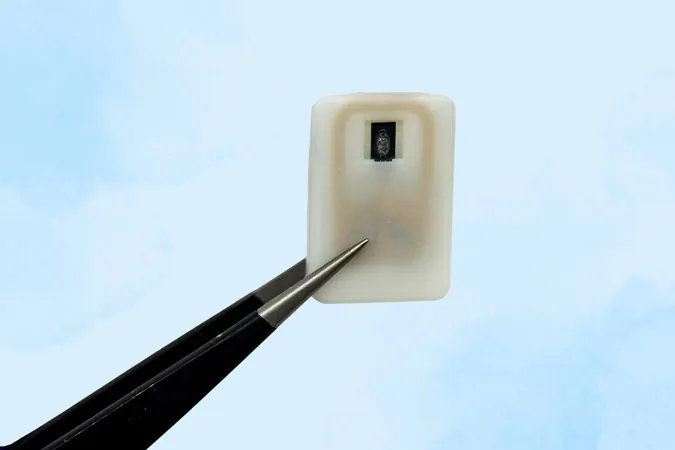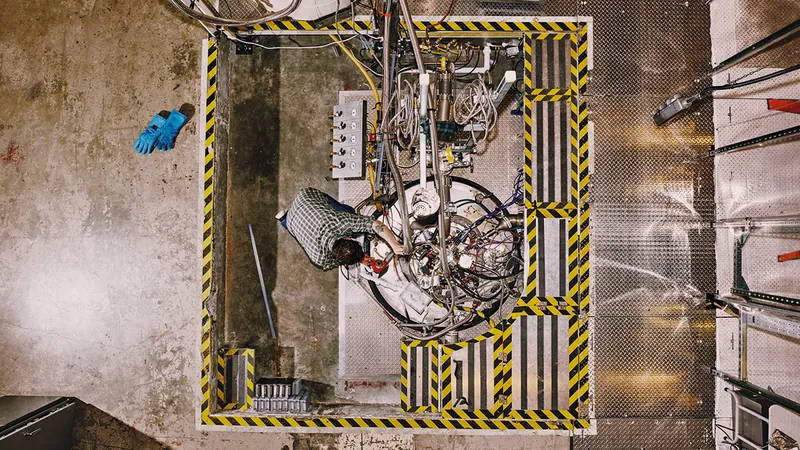
NASA's Groundbreaking Missions Set to Uncover Secrets of the Mysterious Auroras!
2025-01-21
Author: Yu
Introduction
In an exciting development for space science enthusiasts, NASA is preparing to launch two innovative rocket missions from Alaska with the goal of unraveling the enigmatic behavior of auroras. These enchanting light displays in the sky—commonly known as the northern lights—vary widely, with some flickering, others pulsating, and some exhibiting eerie dark spots. This research aims to deepen our understanding of the space environment around Earth, ultimately benefiting astronauts and spacecraft traversing this dynamic realm.
Launch Details
Scheduled for launch on January 21, 2025, the rockets will depart from the Poker Flat Research Range near Fairbanks, Alaska. Witnessing the aurora borealis has long been a captivating experience for those lucky enough to be under its glow. As vibrant ribbons of color dance across the sky, they create a mesmerizing connection between Earth and space—yet beneath this beauty lies a complex interplay of subatomic collisions, primarily driven by electrons from solar winds.
Mission Leaders
Leading the charge in this mission are Marilia Samara and Robert Michell, both esteemed space physicists at NASA’s Goddard Space Flight Center. They liken their work to that of crime scene investigators, piecing together the mysteries of why some auroras behave the way they do. The primary focus is on understanding what fuels these random, sometimes chaotic, shifts in electron movement that form these breathtaking displays.
First Mission: GIRAFF
The first mission, known as GIRAFF (Ground Imaging to Rocket investigation of Auroral Fast Features), will deploy two rockets into distinct types of auroras. One rocket targets fast-pulsating auroras, which blink on and off multiple times a second, while the other will investigate the flickering variants that can flash up to 15 times a second. "It looks like the flickering of an old TV," noted Michell, emphasizing the unique characteristics of these auroral phenomena. The important measurements taken during these launches are expected to pinpoint the underlying acceleration processes causing these divergent behaviors.
Second Mission: Black Auroras
Meanwhile, the second mission, helmed by Samara, aims to study "black auroras." These darkened patches represent areas where the usual glow of an aurora seems to be missing—potentially resulting from a reversal of incoming electron streams that escape back into space. Groundbreaking studies from the European Space Agency and NASA's Cluster satellites over the past 25 years have hinted at these phenomena, but definitive data is still needed. “It's crucial to detect outgoing electrons to confirm it’s a true black aurora,” Samara explains.
Data Gathering Techniques
To gather the necessary data, Samara's team will launch their rocket directly through these mysterious black auroras and surrounding areas to analyze the electron populations and elucidate how and why these stream reversals occur. The cleverly named Black and Diffuse Aurora Science Surveyor will venture into these dark spaces, adding another layer to our comprehension of auroral behavior.
Challenges of Aurora Prediction
However, timing the launches is an intricate task. Aurora movements can defy earthly winds, and so the teams will rely on ground-based cameras situated at the launch site and an observatory in Venetie, Alaska. With approximately five minutes needed to reach altitude, these experts must predict the auroras' position with precision based on their movements, creating a challenge that merges scientific knowledge with intuitive guesswork.
Conclusion
As excitement builds around these impending rocket launches, the outcome could revolutionize our understanding of auroras, space weather, and the overarching forces at play in our solar system. Will these missions finally demystify the enchanting yet puzzling lights in our skies? Stay tuned as NASA embarks on this cosmic adventure!



 Brasil (PT)
Brasil (PT)
 Canada (EN)
Canada (EN)
 Chile (ES)
Chile (ES)
 Česko (CS)
Česko (CS)
 대한민국 (KO)
대한민국 (KO)
 España (ES)
España (ES)
 France (FR)
France (FR)
 Hong Kong (EN)
Hong Kong (EN)
 Italia (IT)
Italia (IT)
 日本 (JA)
日本 (JA)
 Magyarország (HU)
Magyarország (HU)
 Norge (NO)
Norge (NO)
 Polska (PL)
Polska (PL)
 Schweiz (DE)
Schweiz (DE)
 Singapore (EN)
Singapore (EN)
 Sverige (SV)
Sverige (SV)
 Suomi (FI)
Suomi (FI)
 Türkiye (TR)
Türkiye (TR)
 الإمارات العربية المتحدة (AR)
الإمارات العربية المتحدة (AR)